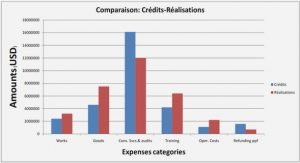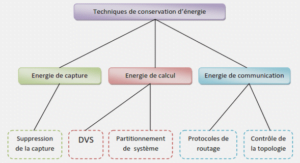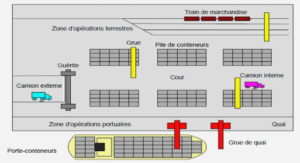In many systems, natural disturbances are coupled with human activities and affect abiotic and biotic properties of the ecosystems (Vitousek et al. 1997b, Tilman and Lehman 2001). Habitat destruction (Brooks et al. 2002, Tôle 2002, Hanski 2005), pollution (McNeely 1992, Oleksyn and Reich 1994) and alterations of biogeochemical cycles (carbon and nitrogen) by human activities (Vitousek et al. 1997a, Vitousek et al. 1997b, Rabouille et al. 2001) are potential sources of stress and have negatively affected the structure and function within many ecosystems (Vitousek et al. 1997b, Hooper et al. 2005). Biodiversity loss is a major threat to the ecosystem functioning (Hooper and Vitousek 1997, Tilman 1999, Hooper et al. 2005, Stachowicz et al. 2007) and considered as important as other major environmental changes (e.g. climate warming, nutrient loading) on the ecosystems healthiness (Hooper et al. 2012). Therefore, understanding the consequences of biodiversity loss as a stress for the ecosystem has become a leading motivation in many ecological studies (Grime 1997, Loreau et al. 2002, Worm et al. 2006).
For many years, the link between biodiversity and stability of ecosystems has been well investigated (MacArthur 1955, Elton 1958, Pimm 1984, Tilman 1996, Tilman 1999, Lehman and Tilman 2000). Greater diversity generally increases the stability of ecosystem, since more species will have a broader range of functional traits and response strategies to disturbance (Tilman and Downing 1994, Tilman 1996, Tilman 1999, Yachi and Loreau 1999, Stachowicz et al. 2007). An essential attribute of ecosystem stability is resistance (or ‘inertia’ sensu Underwood 1989). Resistance is defined as the capacity of a system to remain unchanged when facing disturbances or stresses (Pimm 1991, Grimm and Wissel 1997, Lehman and Tilman 2000).
The presence of certain key species may increase the stability (and resistance) of the community (Maggi et al. 2009, Grman et al. 2010, Watson and Estes 2011). In the context of biodiversity loss, the disappearance of key species will likely have a major effect on the ecosystem functioning. For instance, habitat-forming species (or ecosystem engineers and bioengineers, sensu Jones et al, 1994) offer refuge and protection for numerous organisms and thus play a crucial role in the ecosystem functioning. A loss of habitat-forming species has a negative impact on the surrounding community, with a reduction of associated species richness and abundance (Rueda et al. 2009, Pillay et al. 2010, Schein et al. 2012, Do et al. 2013, Watt and Scrosati 2013).
Experimental design
We used an orthogonal factorial experiment design to evaluate the effects of biodiversity loss (canopy, 2 levels; grazer, 2 levels) and nutrient enrichment (2 levels) on the structure and fonction of the intertidal benthic communities. All 8 treatments from this design, and a procedural control (for the grazer exclusion; see below) were replicated four times (n = 4) and randomly assigned to 36 experimental plots (50 x 50 cm) on emergent rocky substrates on our study area. Plots were placed at similar height in the mid-intertidal zone (average of 1.34 m ±0.20 m), in a 400 m wide area. The experiment plots, marked with anchor screws, were haphazardly selected with the criteria of: homogenous flat substrate; without pools or large crevices; and with a minimum of 80% cover of Fucus spp.. A minimum distance of 3 meters between plots was respected to avoid treatment interaction .
The grazer treatment had also two treatment levels: grazers present (G+) and grazers absent (G-). In the latter, grazers were L. obtusata, L. saxatilis and L. littorea, Tectura testudinalis, Margarites spp. and Jaera marina and were removed by handpicking. The exclusion treatment was made up with a physical barrier composed of a thin layer of natural sticky barrier (Tree Tanglefoot Insect Barrier, The Tanglefoot Company, Grand Rapids, USA) and a small twisted wire brush (2 cm in diameter) placed on cleared (-5 cm width) surface on the contour of the experimental plot. When needed, these surfaces were smoothed with small quantity of concrete (Poly-Plug Bomix, Daubois Inc. SaintLéonard, Canada) and epoxy (West Systems Inc, Bay City, USA). Procedural controls (n = 4) with incomplete brushes were also implemented in natural communities. No difference was observed between control plots (canopy present, grazers present and no enrichment) and the procedural controls for all response variables with two exception . At the study site, the abundance of small grazers (< 2mm) is large and the implementation of cages with small screen would certainly have had an effect on natural communities. Moreover, the cageless grazer treatment used in this study did not have the undesired effects of light and flow reduction and detritus retention commonly seen with cages (Range and Underwood 2008).
Structure of the community
The community in each plot was sampled using a 30 x 30 cm quadrat placed in the center of experimental plots. Non-destructive visual estimates of abundance as percent cover of all identified (> 1mm) taxa (usually species level) of each plot have been done at 4 distinct times: Date 1 (June 2-9, before establishment of the treatments), Date 2 (July 1-8), Date 3 (July 31- August 6) and Date 4 (August 29- September 4). Inventories were performed before any maintenance of the plot. The percent cover of macroalgae and mussels were estimated with the division of the 30×30 cm frame into 25 equal squares representing 4% of the total quadrat cover. Mobile invertebrates were counted and later transformed into % cover . This latter procedure is common (e.g. Scrosati et al. 2011) and the same unit among abundances is necessary to assess the community dominance profiles in our treatments. The cover was estimated per species, so the total summed % in a plot often exceeded 100%. Following the last visual inventory, a destructive sampling to collect all biomass (except crustose species) in the sampled 30 x 30 cm plot was done. The biomass samples were sieved ( 0 1 mm) and all individuals were identified under microscope and weighted (±0.00005 g). Biomass was converted into energy (kilo Joules) with conversion factors from Brey (2004) .
Function of the community
To assess the effects of nutrient enrichment on the community function with or without canopy, measures of primary production were estimated at the end of July with CO₂ concentrations (ppm) variations using benthic chamber following the method described by Migné et al. (2002). The chamber consisted of a transparent dome and a base of Plexiglas placed over the 30 x 30 cm sampled community plot and airtight sealed to the ground with neutral silicon. The CO2 variations in the chamber were measured with an infrared CO2 gas analyzer (Li-800; LI-COR Inc., Lincoln, NE, USA) and recorded on a data logger (Li-400; LI-COR Inc.) every 15 seconds for 15- 20 min. Measures of CO2 concentrations were done at ambient light (> 1000 |nmol photon/m² measured in PAR 600-700nm) for net primary production (NPP) and with an opaque polyethylene sheet placed over the chamber to measure respiration (R). The CO₂ fluxes for net primary production and respiration were calculated with the following formula:
Flux (mmolC.m⁻². h⁻¹) = b (18.2•60) / (22.4•1000•0,09)
where the slope b is obtained with a linear regression on the CO2 variations recorded from the chambers; 18.2 = volume (liter) of air in the chamber; 60 = minutes in hours; 22.4 : molar air by liter in molar volume. The gross primary production (GPP) of the community is then calculated by adding NPP and R. Note that this method has no purpose to be used for global CO₂ budget but used only to give a metabolic state of the community in the same conditions and for comparison among treatments.
|
Table des matières
CHAPITRE I – INTRODUCTION GÉNÉRALE
CHAPITRE II – RESISTANCE OF BENTHIC COMMUNITIES TO MULTIPLES
STRESSES
2.1 INTRODUCTION
2.2 MATERIALS AND METHODS
2.2.1 Study site
2.2.2 Experimental design
2.2.3 Sampling
2.2.3.1 Structure of the community
2.2.3.2 Function of the community
2.2.4 Data analysis
2. 3 RESULTS
2.3.1 Effects of the single and multiple stresses on the community
abundances and diversity indices
2.3.2 Effects of single and multiples stresses on the community
structure
2.3.3 Effects of single and multiple stresses on the community
functions
2.4 DISCUSSION
2.4.1 Effects on the community structure
2.4.2 Effects on the community functions
2.4.3 Resistance of the community
CHAPITRE III – CONCLUSION GÉNÉRALE
![]() Télécharger le rapport complet
Télécharger le rapport complet






